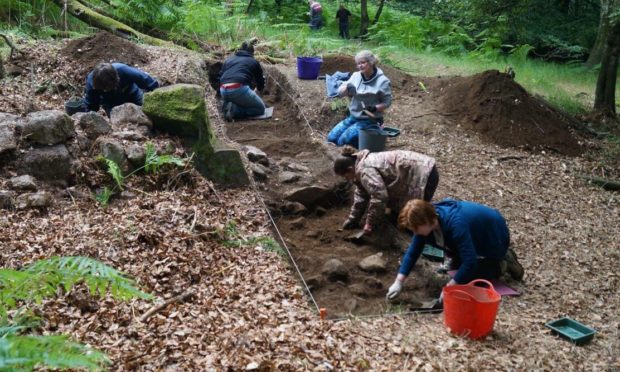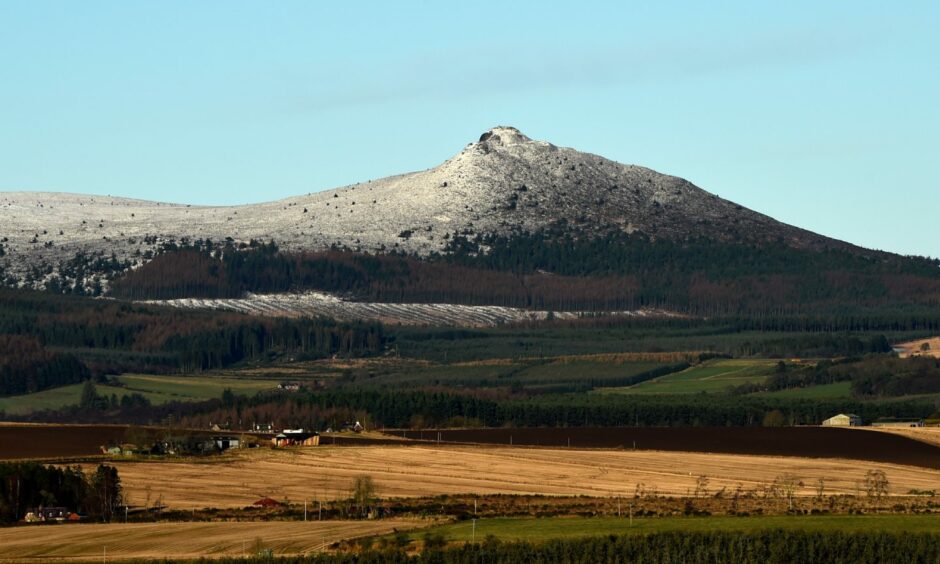Relics dating back more than 1,000 years have been uncovered by archaeologists during a dig on Bennachie.
Enthusiasts from Bailes of Bennachie and experts from Aberdeen University have unearthed the finds during a 15-day excavation.
It is part of a project to discover and learn more about the Aberdeenshire peak.
Dig investigates ‘mysterious landscape’
Archaeologist Iain Ralston supervised the group of enthusiastic volunteers in the dig on the grounds of Pittodrie Estate on the lower slopes of Bennachie.
The excavation focussed on attempts to understand the historic Bede House, which is overlooked by a mound that in 2019 was found to contain charcoal from the 10th Century.
And the most recent dig uncovered more fragments from the same era as well as stone and timber structures that met a fiery end.
Bailies archaeologist Colin Shepherd said: “This has been an exciting dig as we have made further inroads into trying to understand a series of mysterious landscape features in the grounds of Pittodrie Estate.
“A large enclosure beneath the historic Bede House was sectioned in a number of places to try and understand the nature of the site and to attempt to find dating evidence.
“A stone-built structure within the enclosure has given up a piece of charcoal and this should lead to a determination of its date and relationship with the larger enclosure.”
Mysterious stone unearthed in dig
It is hoped the dig will resume again next summer.
The Bailies of Bennachie landscape project has no end date or purpose, other than to learn and understand more about the area.
Mr Shepherd explained items were found within the stone and timber structures during the Bennachie dig.
He said: “Within the foundation stones of one of the walls were pieces of finely-worked masonry and a fascinating engraved carving on a slate-like stone.
“This was just a fragment of a larger piece that had been engraved with fine, concentric circles.
“The purpose of the stone is, as yet, unknown but it bears similarities to a Neolithic engraving discovered in Denmark.
“In 2019 a piece of late Neolithic or early Bronze Age pottery was found in one of the trenches on the mound.’’

